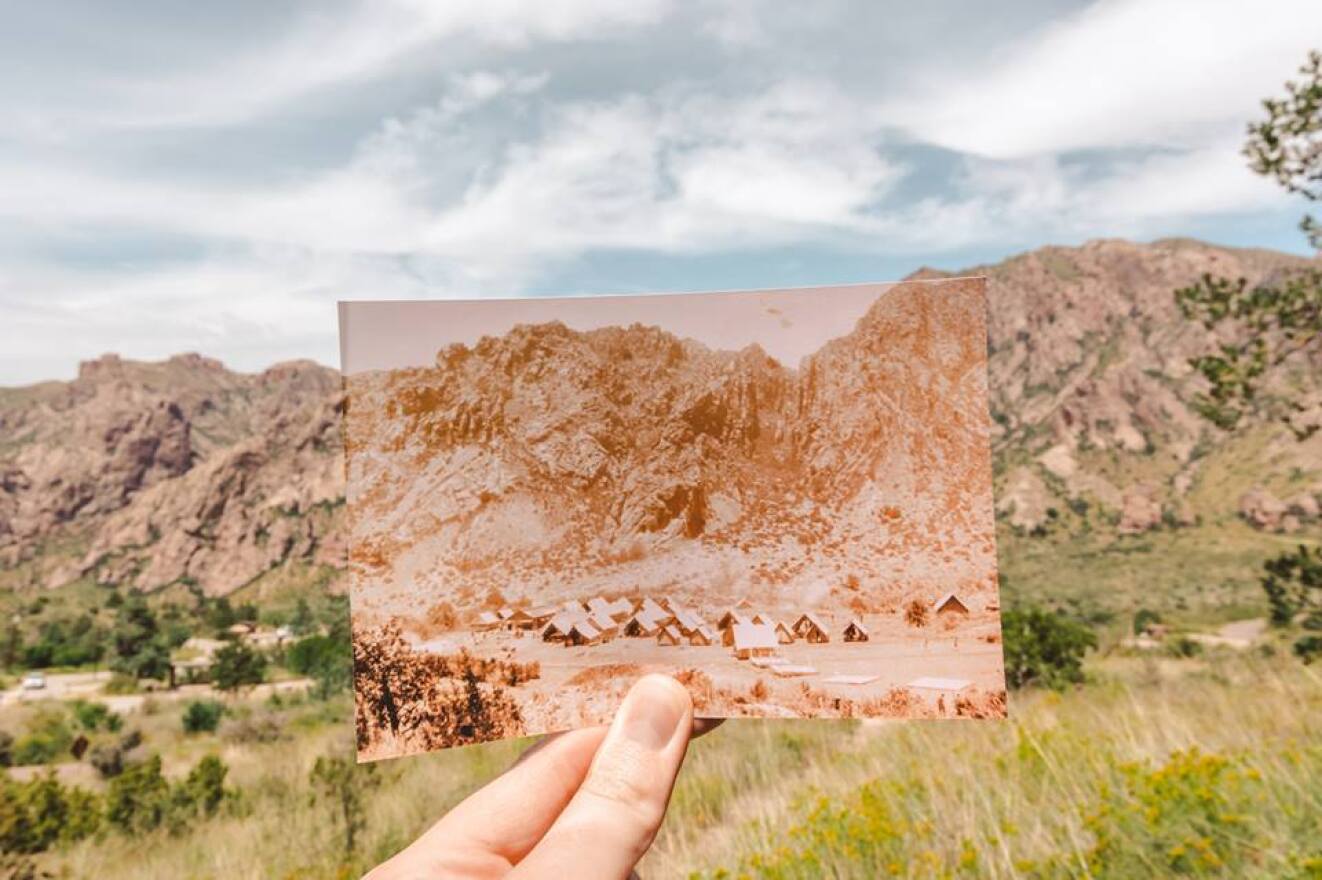It’s time to blow out the candles. Big Bend National Park — home to 800,000 acres of sweeping Chihuahuan desert landscapes, imposing mountains, wiry cacti and an international boundary in the Rio Grande — is turning 75.
The park was established on June 12, 1944, a mere week after Allied forces stormed the beaches of Normandy during World War II. The late 1930s and '40s were crucial moments in the park’s development when the state began seeking out land in the Big Bend from area ranchers during the tail-end of the Great Depression. The State of Texas allocated an estimated $1.5 million to buy hundreds of thousands of acres and soon deeded the land to the federal government.
The first year Big Bend National Park was open, some 1,400 visitors came through the sprawling park. But in more recent years, annual visitation has soared to nearly 440,000.
“If you haven’t been there, go! It’s one of the great treasures of Texas,” said state Rep. Poncho Nevárez at the state Capitol in May.
“And when people in London, in Paris, and Rome, and in Japan, in China, when they think of Texas, you know what they think of? They think of the Big Bend, because that’s Texas; it’s big and beautiful.”

The park is home to two major ecosystems — the Chihuahuan Desert and the Chisos Mountains — which support a variety of plants and different animals.
“I think some of the strength of Big Bend is the amount of diversity you’ll find here,” said park ranger Jennette Jurado, "which is a little unexpected for most coming to a desert area.”
The history of the Big Bend region is as deep and varied as the land itself. Millions of years ago, the land was largely underwater. It was home to roaming dinosaurs, pterosaurs and even a bus-sized crocodile that swam along the once swampy lands of the Big Bend.
Today, the land is a rich resource for researchers and paleontologists, looking for fossilized remains and windows into our geological history.
“According to local legend, after the making of heaven and earth was accomplished, the Creator took all the remaining stone and rubble and tossed it into the remote corners of West Texas,” wrote Arthur R. Gomez, a National Park Service historian and author of a study of the region.
After millions of years, that remote, rugged land became home to some of the first North Americans, whom archeologists refer to as Paleoindians. Across the country, these groups hunted mammoths, sloths, and bison. But in the Big Bend, the Paleoindian lifestyle was different — they had to adapt to the arid landscape.
“Rather than killing large animals like bison, they primarily relied on things like rabbits and mice and snakes and lizards,” said Sul Ross State University historian and archeologist David Keller back in 2016. “Succulents were a huge part of their adaptation – roots and bulbs, like agaves and sotol.”
The first Europeans arrived in the Big Bend by the 1500s. The Spanish called the area "el despoblado" — the unpopulated land. And shortly thereafter, the Mescalero Apache and the Comanche arrived in the region.
Hundreds of years later, by the late 19th century, ranchers flocked to Far West Texas to take advantage of the open range. Much of that private ranchland now makes up the national park and Big Bend Ranch State Park.
“Over the last 75 years, Big Bend has continued to change and has had a number of interesting events happen,” said ranger Jurado, recalling park milestones such as black bears reintroducing themselves in the '80s and the reopening of the Boquillas port of entry in 2013.
Despite the highs, the park has had its share of challenges too. More recently, the park weathered a government shutdown and has had to manage trespassing livestock. And just last month, a wildland fire brought the West Texas park face to face with what may be its most difficult moment: the destruction of historic adobe buildings in the park’s Castolon district.

In late May, a fire that began in Mexico jumped the Rio Grande. After the blaze spread into the park, embers landed on the area’s historic barracks building, which was home to the Castolon Visitor Center and the La Harmonia Store. The adobe building — first built nearly 100 years ago to house U.S. Cavalry during the Mexican Revolution — was destroyed.
“Certainly, we do have to remember that not everything this year was positive, that we did lose two structures,” said Jurado. “But with the fire, we also saved nine structures that would have burned that night.”
A fundraiser has been set up by the Big Bend Conservancy to help pay for recovery costs for the Castolon district. The group’s executive director, Courtney Lyons-Garcia, said the majority of donations so far have been made in honor of relatives and friends.
“It was just kind of one of those places in Big Bend that is an emotional place for people,” said Lyons-Garcia.
Jurado says a high number of Big Bend National Park visitors are repeat visitors, who often return to celebrate birthdays, anniversaries, or because it's a family tradition.
“Having a role of stewarding a park that people are so in love with — or is so important to their family — is a huge honor and a big responsibility and something we’re proud to do at the national park service.”
Seventy-five years into its establishment, Big Bend National Park’s reputation as a rugged, majestic getaway continues to attract visitors who create their own memories against a backdrop of deep history.
Copyright 2020 KUT 90.5. To see more, visit . 9(MDAxODQzOTgwMDEyMTcyNjI4MTAxYWQyMw004))



